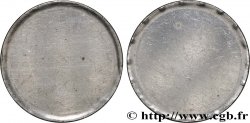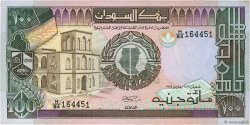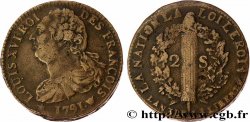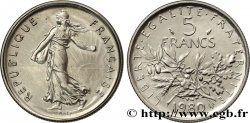v23_2113 - EUROPEAN CENTRAL BANK 1 euro France frappé avec un insert fautif (flan de 1 centime en cœur) 2001 Pessac
MONNAIES 23 (2004)
Prezzo di inizio : 600.00 €
Valutazione : 2 000.00 €
lotto invenduto
Prezzo di inizio : 600.00 €
Valutazione : 2 000.00 €
lotto invenduto
Tipo : 1 euro France frappé avec un insert fautif (flan de 1 centime en cœur)
Data: 2001
Nome della officina / città: Pessac
Metallo : cupronichel
Diametro : 23,25 mm
Asse di coniazione : 6 h.
Peso : 6,03 g.
Orlo : alternée lisse et cannelée
Grado di rarità : R3
Commenti sullo stato di conservazione:
Exemplaire superbe qui conserve une bonne partie de son brillant d’origine. Une légère patine recouvre les deux faces de cet exemplaire
N° nelle opere di riferimento :
Diritto
Titolatura diritto : LIBERTÉ ÉGALITÉ FRATERNITÉ.
Descrittivo diritto : Arbre dont les racines sortent d’un hexagone et accosté de R - F, signature J. JIMENEZ, bordure de douze étoiles, à l’exergue le millésime.
Rovescio
Titolatura rovescio : 1 EURO.
Descrittivo rovescio : Carte de l’Union européenne sur six traits tirés entre deux groupes de six étoiles formant les douze pays de la zone euro, signature en monogramme LL.
Commento
Cet exemplaire est frappé sur un flan dont la couronne extérieure est normale (75 % de cuivre, 20 % de zinc et 5 % de nickel) MAIS, le cœur est en acier plaqué cuivre (il réagit à l'aimant) et est très certainement un flan de 1 centime. Cette hypothèse est aussi confirmée par l'étude du poids : celui de la couronne extérieure seule est d'environ 3,80 g auquel nous additionnons les 2,30 g du flan de 1 centime soit 6,10 g au total. Notre exemplaire pèse 6,03 g et se révèle donc très proche. On peut par ailleurs noter qu'il existe aussi une pièce de 1 euro avec cœur rouge comme cet exemplaire, mais frappé en Allemagne. L'explication est à rechercher du côté d'un mélange de flans, lors de la préparation du lot d'inserts destiné à la frappe des bicolores. Le flan en acier plaqué cuivre devait être coincé dans le fond du conteneur ou dans la presse et s'est libéré pour suivre le chemin des inserts. Seule une inspection visuelle de chaque pièce frappée permettrait de détecter ce genre d'anomalie avant la sortie des ateliers ce que ne permettent pas les quantités importantes d'euros frappés. Lors de la frappe, la différence d'épaisseur des deux parties serties ensemble fait qu’il n’y a pas eu de remontée de gravure sur la partie centrale.
This example is struck on a flan with a normal outer crown (75% copper, 20% zinc and 5% nickel) BUT, the core is copper-plated steel (it reacts to the magnet) and is most likely a 1 cent flan. This hypothesis is also confirmed by the study of the weight: that of the outer crown alone is approximately 3.80 g to which we add the 2.30 g of the 1 centime flan, making 6.10 g in total.. Our example weighs 6.03 g and is therefore very close. It should also be noted that there is also a 1 euro coin with a red heart like this one, but minted in Germany.. The explanation is to be found in a mixture of blanks, during the preparation of the batch of inserts intended for striking the two-tone coins.. The copper plated steel blank had to be stuck in the bottom of the container or in the press and came free to follow the path of the inserts. Only a visual inspection of each coin minted would allow this type of anomaly to be detected before it leaves the workshops, which is not possible with the large quantities of euros minted.. When striking, the difference in thickness of the two parts set together meant that there was no engraving rising on the central part
This example is struck on a flan with a normal outer crown (75% copper, 20% zinc and 5% nickel) BUT, the core is copper-plated steel (it reacts to the magnet) and is most likely a 1 cent flan. This hypothesis is also confirmed by the study of the weight: that of the outer crown alone is approximately 3.80 g to which we add the 2.30 g of the 1 centime flan, making 6.10 g in total.. Our example weighs 6.03 g and is therefore very close. It should also be noted that there is also a 1 euro coin with a red heart like this one, but minted in Germany.. The explanation is to be found in a mixture of blanks, during the preparation of the batch of inserts intended for striking the two-tone coins.. The copper plated steel blank had to be stuck in the bottom of the container or in the press and came free to follow the path of the inserts. Only a visual inspection of each coin minted would allow this type of anomaly to be detected before it leaves the workshops, which is not possible with the large quantities of euros minted.. When striking, the difference in thickness of the two parts set together meant that there was no engraving rising on the central part







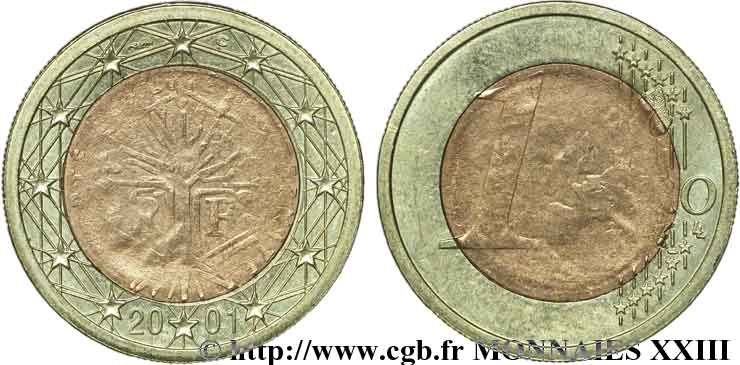
 Segnalare un errore
Segnalare un errore Stampate la pagina
Stampate la pagina Condividi mia selezione
Condividi mia selezione Fai una domanda
Fai una domanda Consegnare / vendere
Consegnare / vendere
 Descrittivo
Descrittivo


